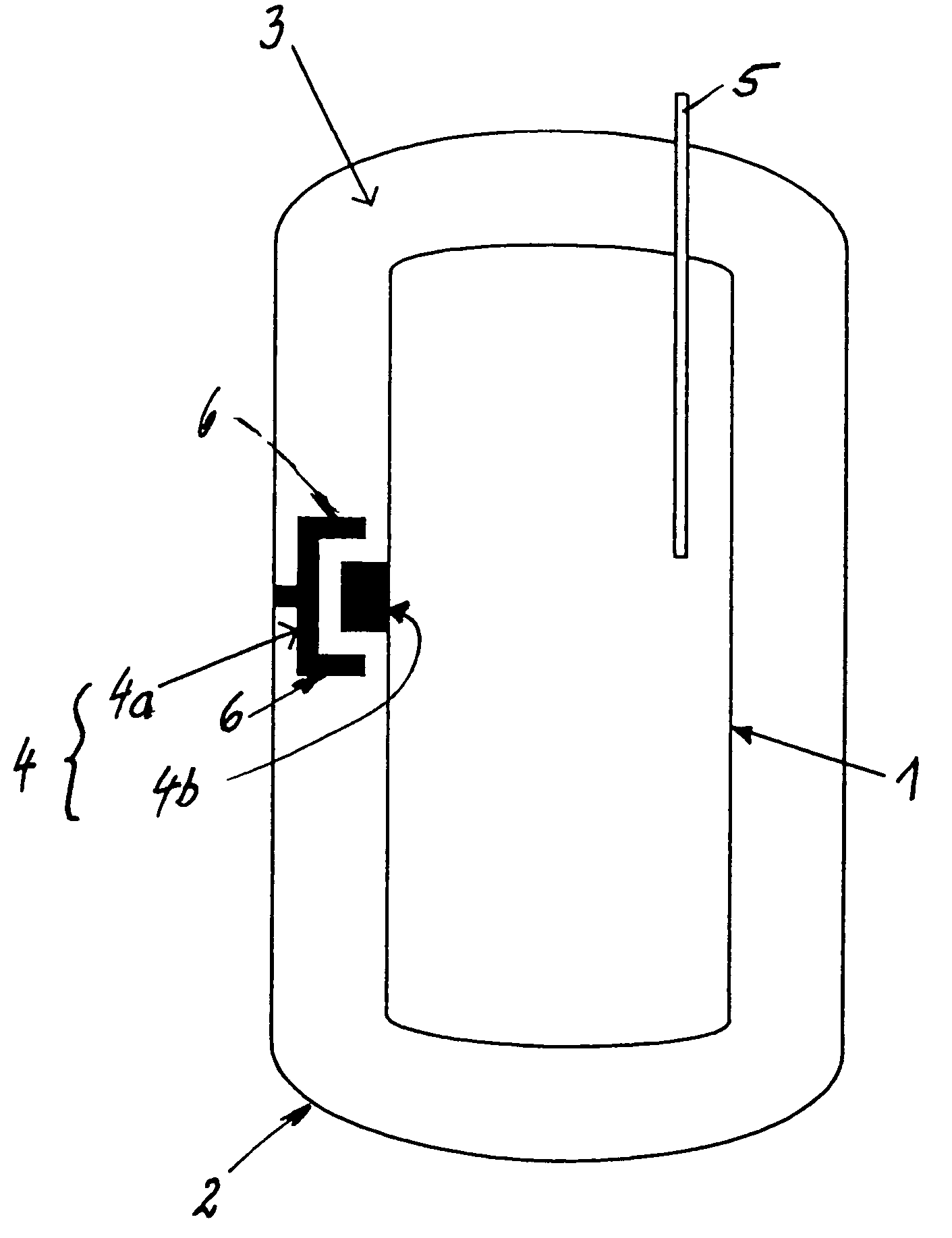Cryogenic tank for storing cryogenic fuel in a motor vehicle and method for using same
a technology for cryogenic fuel and motor vehicles, which is applied in the direction of container discharging methods, vessel construction details, lighting and heating apparatus, etc., can solve the problems of significant scale, undesired heat feeding to stored fuel on a significant scale, and hysteresis behavior, etc., to achieve low thermal capacity, small size, and low cost
- Summary
- Abstract
- Description
- Claims
- Application Information
AI Technical Summary
Benefits of technology
Problems solved by technology
Method used
Image
Examples
Embodiment Construction
[0016]The reference numeral 1 refers to the internal container of a motor vehicle cryo tank, in which is mostly stored cryo fuel in the liquid state, to supply an internal combustion engine or the like that drives the motor vehicle. This internal container 1 is enveloped by an external container 2, which is spaced apart from said internal container, so that the space 3 between these two containers 1, 2 is largely evacuated. That is, between the wall of the internal container 1 and the wall of the external container 2 there is a so-called insulating vacuum (for this purpose the reference numeral 3 is also used).
[0017]A fuel line 5 is run into the interior of the internal container 1 or out of said internal container through the wall of the external container 2 to the outside; through said fuel line the cryo fuel is conveyed into the internal container 1 or the fuel can be removed from said internal container to supply the said internal combustion engine. The latter occurs with fuel t...
PUM
 Login to View More
Login to View More Abstract
Description
Claims
Application Information
 Login to View More
Login to View More - R&D
- Intellectual Property
- Life Sciences
- Materials
- Tech Scout
- Unparalleled Data Quality
- Higher Quality Content
- 60% Fewer Hallucinations
Browse by: Latest US Patents, China's latest patents, Technical Efficacy Thesaurus, Application Domain, Technology Topic, Popular Technical Reports.
© 2025 PatSnap. All rights reserved.Legal|Privacy policy|Modern Slavery Act Transparency Statement|Sitemap|About US| Contact US: help@patsnap.com


